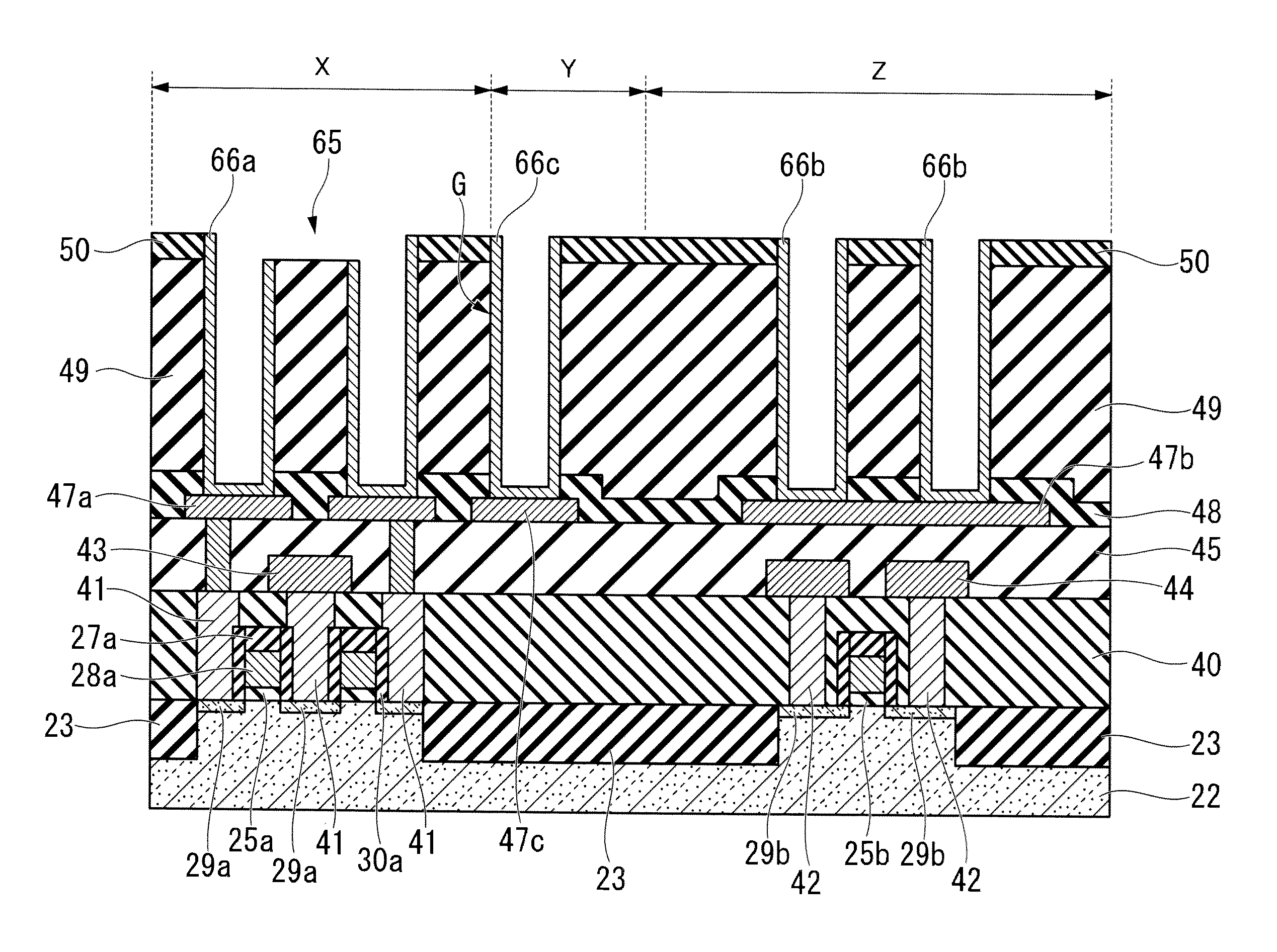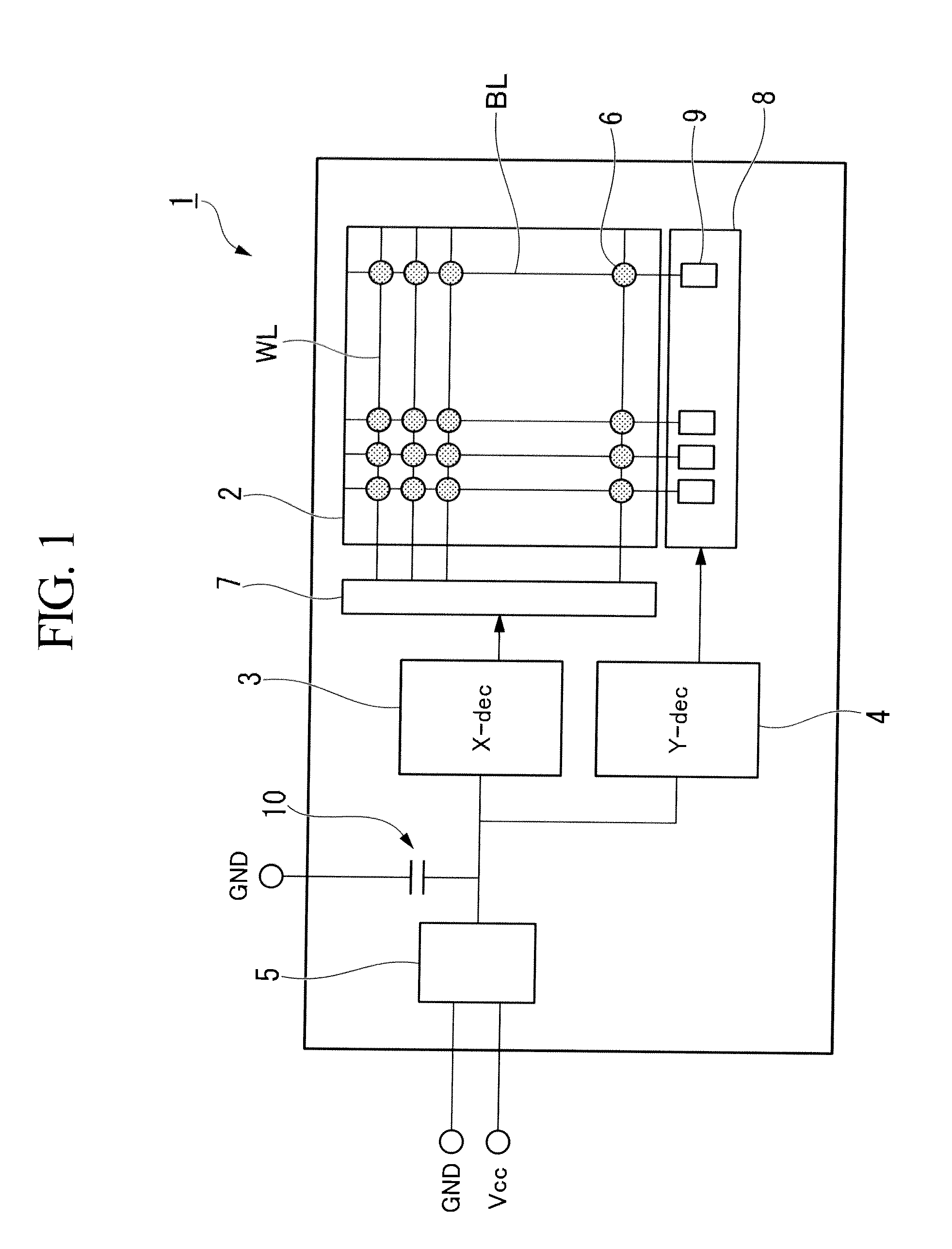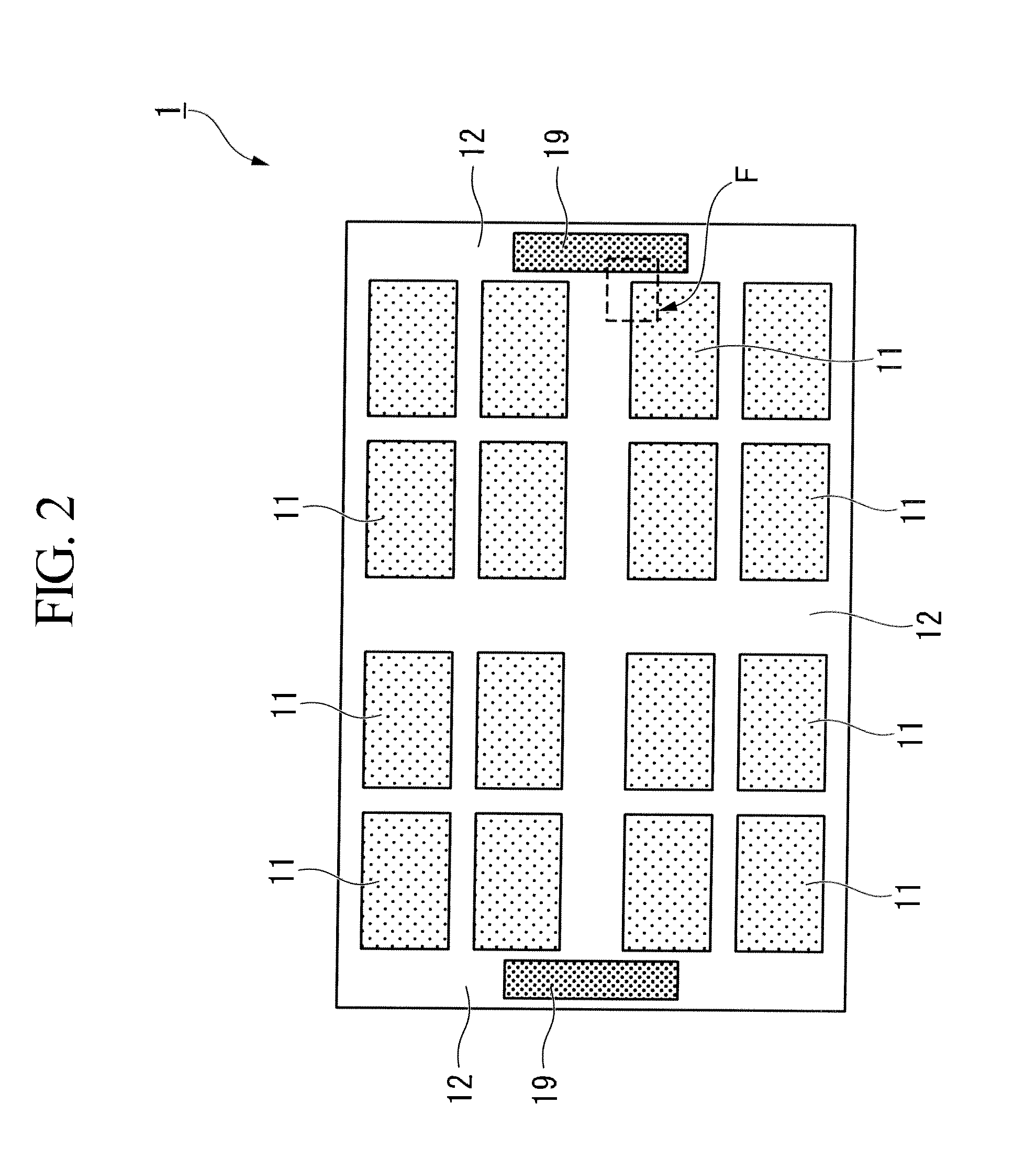Semiconductor device
a technology of semiconductor devices and capacitors, applied in semiconductor devices, capacitors, electrical equipment, etc., can solve problems such as malfunction of predetermined circuit operation, random cracks in capacitor insulating films, and unpredictable local deformation of electrodes
- Summary
- Abstract
- Description
- Claims
- Application Information
AI Technical Summary
Problems solved by technology
Method used
Image
Examples
first embodiment
[0034]Hereinafter, a DRAM (Dynamic Random Access Memory), which is a semiconductor device of a first embodiment of the present invention, is explained. FIG. 1 is a circuit diagram illustrating main part of the DRAM including a decoder circuit.
[0035]As shown in FIG. 1, a semiconductor chip 1 of the DRAM includes: a memory cell array 2; an X-decoder 3; a Y-decoder 4; and an internal power-supply circuit 5 that supplies an internal power to the decoders 3 and 4.
[0036]The memory cell array 2 includes multiple word wires WL and multiple bit wires BL. A memory cell 6 is formed at an intersection of each word wire WL with each bit wire BL. The memory cell 6 includes a capacitor 21a for storing data (see FIG. 3), and an MOS transistor for performing selection.
[0037]An external power-supply voltage Vcc and a ground voltage GND, which are supplied from outside the semiconductor chip 1, are supplied to an internal power-supply circuit 5. Then, the external power-supply voltage Vcc and the grou...
second embodiment
[0118]Hereinafter, a semiconductor device according to a second embodiment of the present invention is explained with reference to FIG. 18. The second embodiment is a modification of the first embodiment, and differs from the first embodiment only in the structure of a compensation capacitor. Therefore, like reference numerals denote like elements between the first and second embodiments, and explanations of elements other than the compensation capacitor are omitted appropriately.
[0119]As shown in FIG. 18, a compensation capacitor 90 of the second embodiment has a structure in which multiple blocks are connected in series where the compensation capacitor 10 of the first embodiment is regarded as one block. Specifically, the compensation capacitor element 90 includes a compensation capacitor 10a in a first block B1 and a compensation capacitor 10b in a second block B2.
[0120]The upper electrode 69b, which is included in the compensation capacitor 90, is provided for each of the first ...
third embodiment
[0125]Hereinafter, a semiconductor device according to a third embodiment of the present invention is explained with reference to FIG. 19. The third embodiment is a modification of the second embodiment. Like reference numerals denote like elements between the second and third embodiments.
[0126]A compensation capacitor 91 of the third embodiment differs from the compensation capacitor 90 of the second embodiment in that the pad 47b is formed for each of a compensation capacitor element 10c in the first block B1 and a compensation capacitor element 10d in the second block B2, and one upper electrode 69d connects lower electrodes in the first and second blocks B1 and B2. In other words, the upper electrode 69d in the first block is electrically connected to the upper electrode 69d in the second block.
[0127]In this case, a set of the pad 47b, a drawing wire 84, and a contact plug 85 is provided for each of the first and second blocks B1 and B2. The pad 47b in one block is connected to ...
PUM
 Login to View More
Login to View More Abstract
Description
Claims
Application Information
 Login to View More
Login to View More - R&D
- Intellectual Property
- Life Sciences
- Materials
- Tech Scout
- Unparalleled Data Quality
- Higher Quality Content
- 60% Fewer Hallucinations
Browse by: Latest US Patents, China's latest patents, Technical Efficacy Thesaurus, Application Domain, Technology Topic, Popular Technical Reports.
© 2025 PatSnap. All rights reserved.Legal|Privacy policy|Modern Slavery Act Transparency Statement|Sitemap|About US| Contact US: help@patsnap.com



